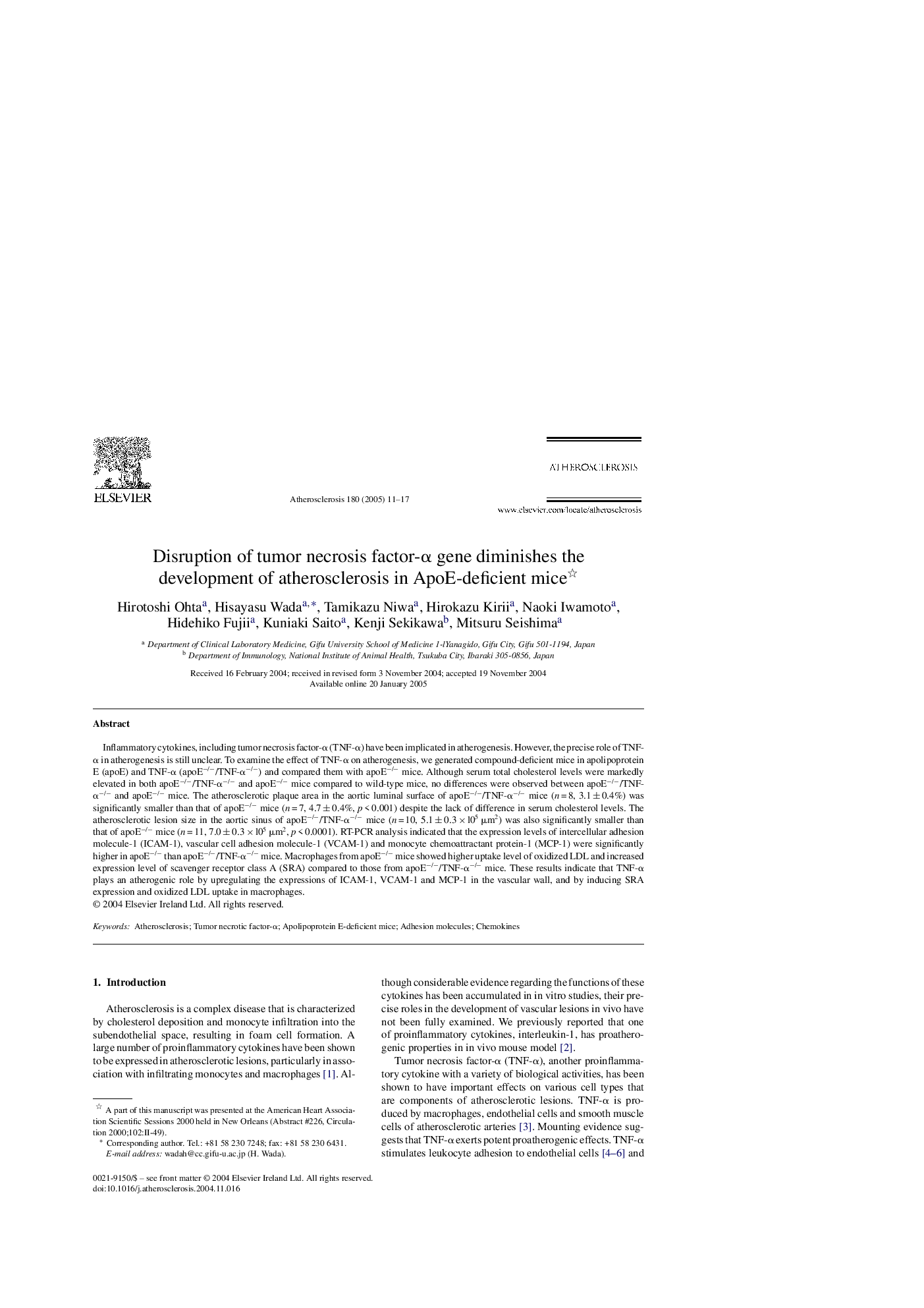| Article ID | Journal | Published Year | Pages | File Type |
|---|---|---|---|---|
| 9157801 | Atherosclerosis | 2005 | 7 Pages |
Abstract
Inflammatory cytokines, including tumor necrosis factor-α (TNF-α) have been implicated in atherogenesis. However, the precise role of TNF-α in atherogenesis is still unclear. To examine the effect of TNF-α on atherogenesis, we generated compound-deficient mice in apolipoprotein E (apoE) and TNF-α (apoEâ/â/TNF-αâ/â) and compared them with apoEâ/â mice. Although serum total cholesterol levels were markedly elevated in both apoEâ/â/TNF-αâ/â and apoEâ/â mice compared to wild-type mice, no differences were observed between apoEâ/â/TNF-αâ/â and apoEâ/â mice. The atherosclerotic plaque area in the aortic luminal surface of apoEâ/â/TNF-αâ/â mice (n = 8, 3.1 ± 0.4%) was significantly smaller than that of apoEâ/â mice (n = 7, 4.7 ± 0.4%, p < 0.001) despite the lack of difference in serum cholesterol levels. The atherosclerotic lesion size in the aortic sinus of apoEâ/â/TNF-αâ/â mice (n = 10, 5.1 ± 0.3 Ã l05 μm2) was also significantly smaller than that of apoEâ/â mice (n = 11, 7.0 ± 0.3 Ã l05 μm2, p < 0.0001). RT-PCR analysis indicated that the expression levels of intercellular adhesion molecule-1 (ICAM-1), vascular cell adhesion molecule-1 (VCAM-1) and monocyte chemoattractant protein-1 (MCP-1) were significantly higher in apoEâ/â than apoEâ/â/TNF-αâ/â mice. Macrophages from apoEâ/â mice showed higher uptake level of oxidized LDL and increased expression level of scavenger receptor class A (SRA) compared to those from apoEâ/â/TNF-αâ/â mice. These results indicate that TNF-α plays an atherogenic role by upregulating the expressions of ICAM-1, VCAM-1 and MCP-1 in the vascular wall, and by inducing SRA expression and oxidized LDL uptake in macrophages.
Keywords
Related Topics
Health Sciences
Medicine and Dentistry
Cardiology and Cardiovascular Medicine
Authors
Hirotoshi Ohta, Hisayasu Wada, Tamikazu Niwa, Hirokazu Kirii, Naoki Iwamoto, Hidehiko Fujii, Kuniaki Saito, Kenji Sekikawa, Mitsuru Seishima,
